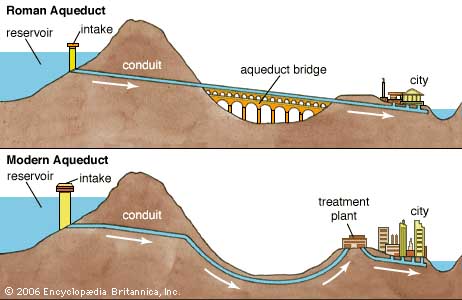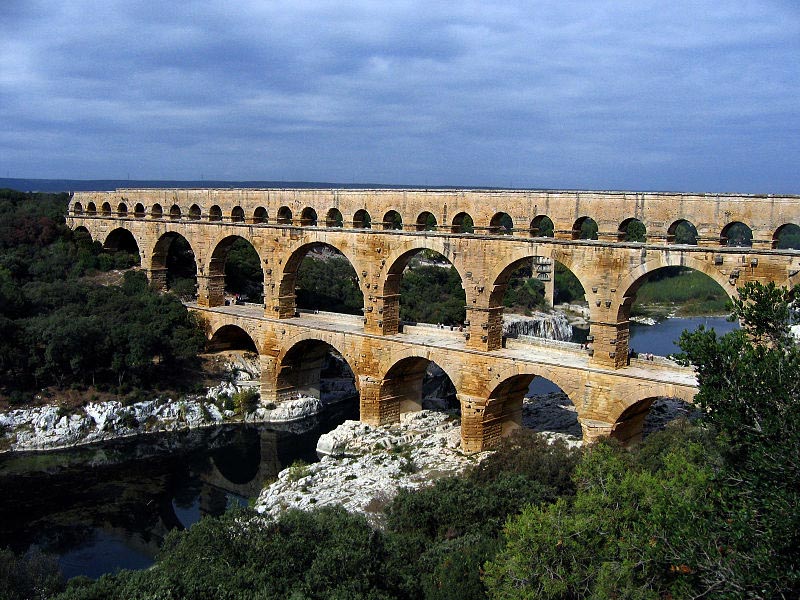Water ways “Aqueducts”

It is one of the greatest feat of engineering given by the time period. The word is derived from the Latin word aqua (“water”) and ducere (“to lead”).Aqueduct is a navigable channel constructed to transport fresh water by the influence of gravity to move water over miles , from higher elevation to low lying areas. Aqueduct required a great deal of planning. They were made from a series of pipes, canals, Stone bridges , and Underground conduits made mostly of stone and terra cotta pipe but also of wood ,leather, lead and bronze.  As water flowed into the cities, it was used for drinking, irrigation, industrial use and to supply hundreds of public fountains or baths.
As water flowed into the cities, it was used for drinking, irrigation, industrial use and to supply hundreds of public fountains or baths.
If we talk about aqueducts one country comes to our mind is Rome, Although aqueducts were not their invention, Romans were very good engineers and brought the design and construction of aqueducts to an all time high, they considered the greatest aqueduct builders of the ancient world, Qanats systems were in use in ancient Persia, India, Egypt, and other Middle Eastern countries hundreds of years earlier. The elaborate system that served the capital of the roman empire, remains a major engineering achievement. Over a period of 500 years—from 312 BCE to 226 CE—11 aqueducts were built to bring water to Rome from as far away as 92 km. aqueducts are still in use in rome one of the example is The Aqua Virgo, an aqueduct constructed by Agrippa in 19 B.C. during Augustus’ reign, still supplies water to Rome’s famous Trevi Fountain in the heart of the city.
Decline of Roman Aqueducts
With the fall of the Roman Empire, some aqueducts were deliberately cut by enemies but many more fell into disuse through lack of organized maintenance. Their failure had an impact on the population of cities; Rome’s declined from its high of over 1 million in the Imperial era to as low as 30,000 in the medieval era.
During the Renaissance, the standing remains of the city’s massive masonry aqueducts inspired architects, engineers and their patrons; Pope Nicholas V renovated the main channels of the Roman Aqua Virgo in 1453. Many aqueducts Rome’s former empire were kept in good repair. The 15th century rebuilding of aqueduct at Segovia in Spain shows advances on the Pont du Gard by using fewer arches of greater height, and so greater economy in its use of the raw materials.


This blog was… how do you say it? Relevant!! Finally I have found something which helped me.
Cheers!
Thanks for the marvelous posting! I seriously enjoyed reading it, you could be a great author.I will be sure to bookmark your blog and may come
back from now on. I want to encourage you to definitely continue your
great posts, have a nice holiday weekend!
When I originally commented I clicked the “Notify me when new comments are added” checkbox and now each time a comment is added I get four emails with the same comment.
Is there any way you can remove people from that service?
Thanks a lot!
I really like it when folks get together and share views.
Great website, stick with it!